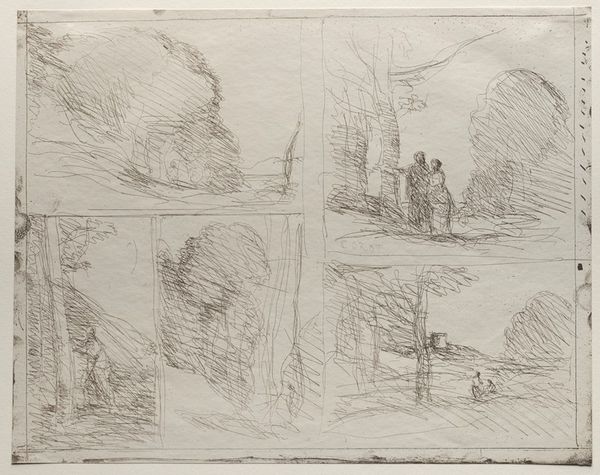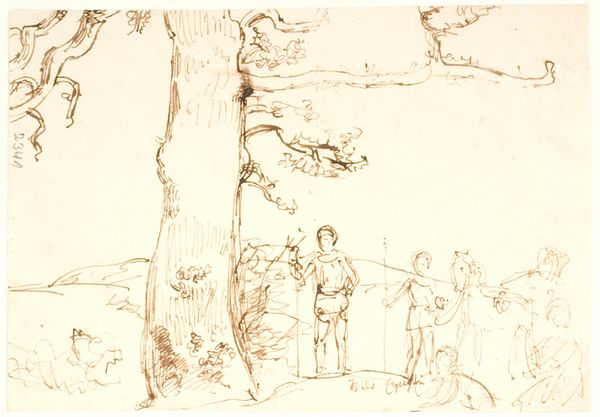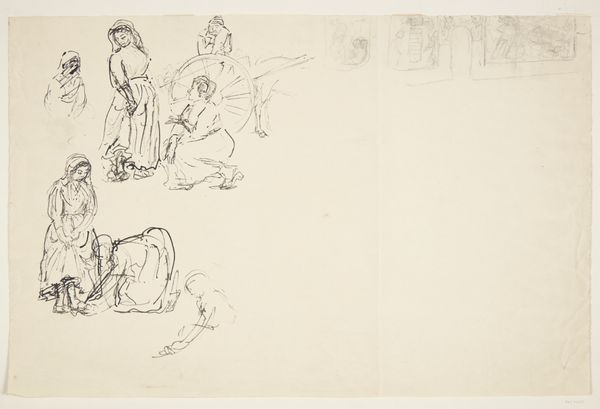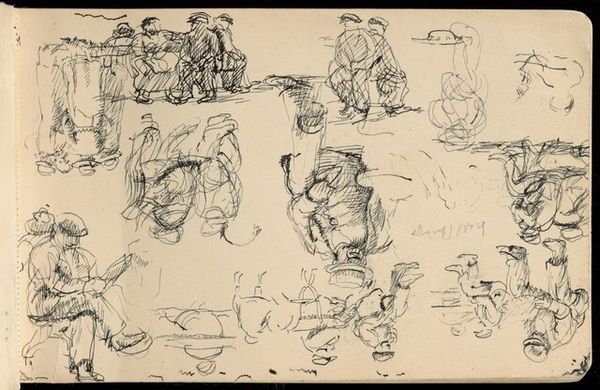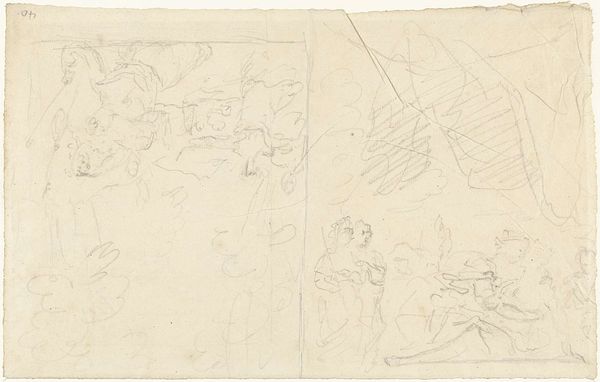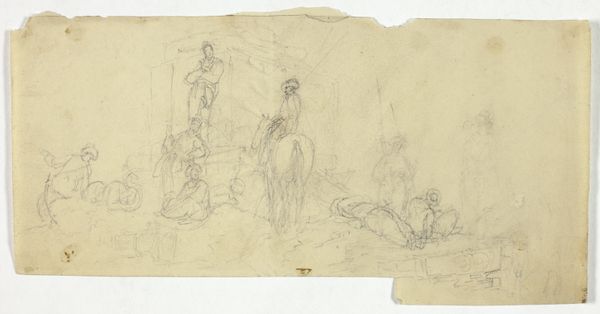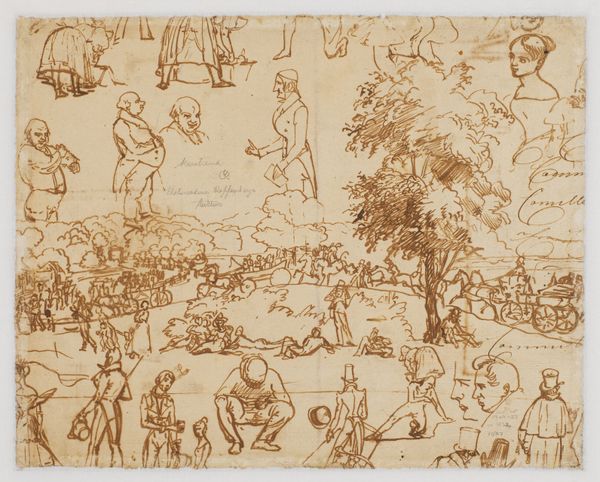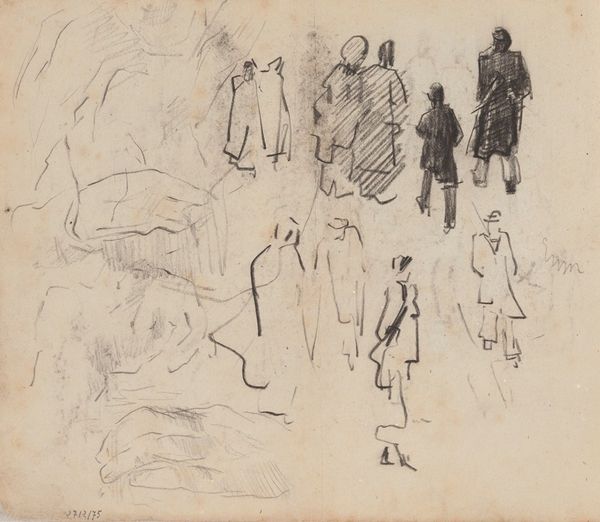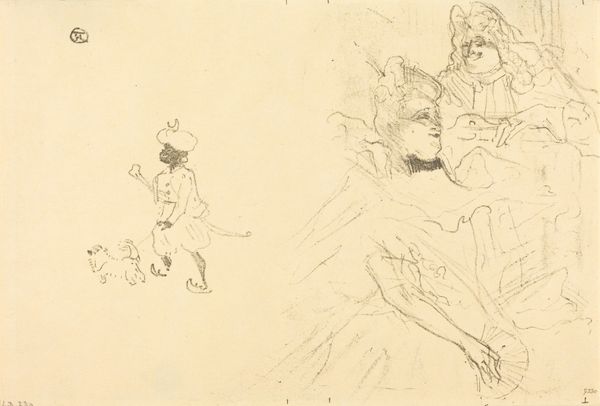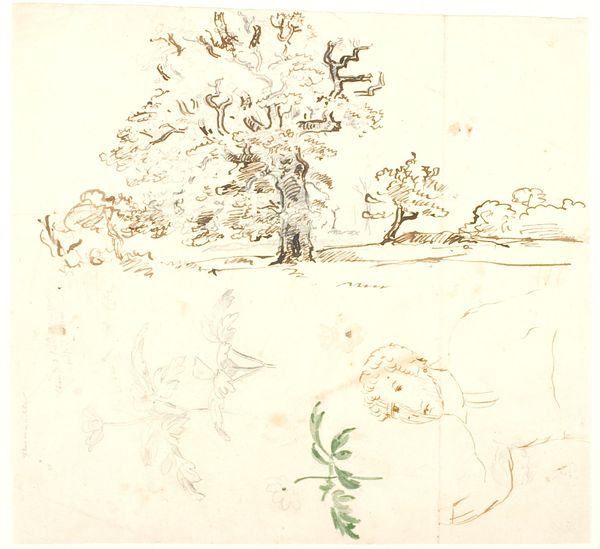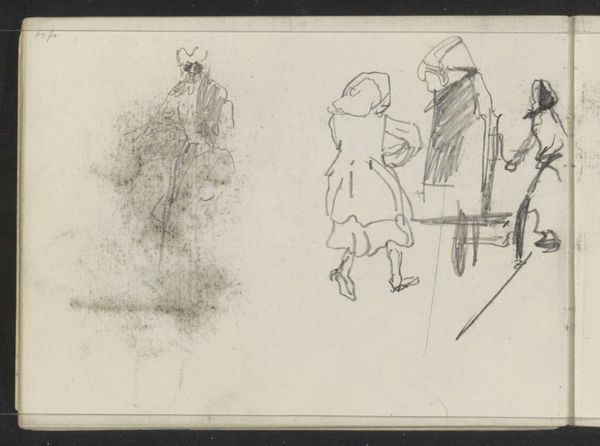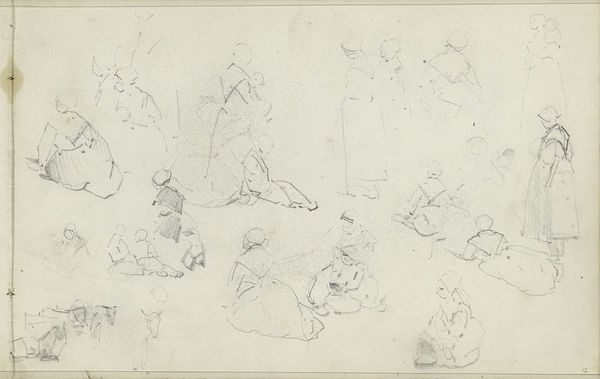
Figurrids og udkast til en komposition: Kristus på Genesareth sø 1837 - 1839
0:00
0:00
drawing, ink, pencil
#
drawing
#
narrative-art
#
figuration
#
ink
#
romanticism
#
pencil
#
history-painting
Dimensions: 222 mm (height) x 317 mm (width) (bladmaal)
Curator: Here we have a drawing by Dankvart Dreyer, executed between 1837 and 1839, titled "Figurrids og udkast til en komposition: Kristus p\u00e5 Genesareth s\u00f8", or roughly translated, "Figure Studies and Sketches for a Composition: Christ on the Sea of Galilee." It’s currently housed here at the SMK. Editor: The first impression I get is… tentative. A collection of studies that, to me, are raw and immediate, focusing less on formal polish and more on the artist's evolving understanding of form and the narrative's composition. Curator: Indeed. Note the artist’s exploration of the subject through pencil and ink; you can almost feel the artist grappling with form and proportion as the composition slowly takes shape. The juxtaposition of meticulously detailed figures and gestural lines create a captivating interplay. Editor: Right, it shows the artist's labour so clearly. Looking closely, one can see how Dreyer seems to work almost like a builder. There's the careful rendering of clothing folds next to quickly sketched outlines indicating how different individuals will populate the space. How might contemporary studio practices have shaped Dreyer's specific method, I wonder? Curator: That's interesting to consider, but what I see speaks more to Dreyer's romantic inclinations. Observe how Dreyer frames his subjects in almost a theatrical manner. Compositionally, this imbues a potent emotional charge, indicative of the artist's intent. Editor: Yes, but there’s a real economy in the deployment of the materials here. There are all kinds of questions evoked when you examine not only what is represented but HOW it is rendered… This piece foregrounds that manual labor aspect that gives drawing its immediacy, no? Curator: I can agree with you there; the texture certainly adds a captivating layer, however the overall compositional structure adheres strictly to traditional pictorial syntax. See how he guides the viewers eyes through strategically positioned figures, crafting meaning in his own distinct language of artistic creation. Editor: Still, appreciating the processes that artists go through...that raw material side is crucial to see their influences. Thinking of the labour allows us to think about the society surrounding art making more substantially than thinking just of the romanticism in the art alone. Curator: Well, on the other hand, such a breakdown can actually miss out on an in depth reading of symbolism, too. However I do suppose we find beauty through diverse analyses. Editor: Agreed. To me, focusing on production reveals a deeper connection to the artmaking practices and allows for a better view of a historic process.
Comments
No comments
Be the first to comment and join the conversation on the ultimate creative platform.
